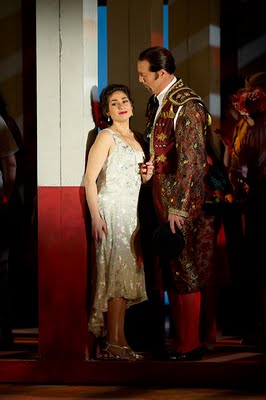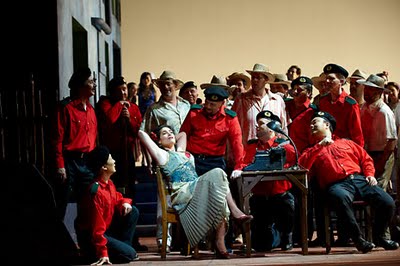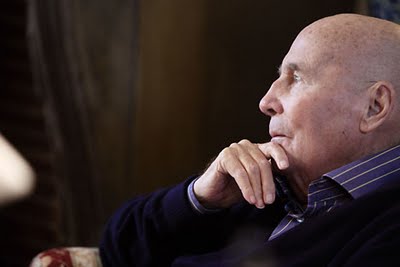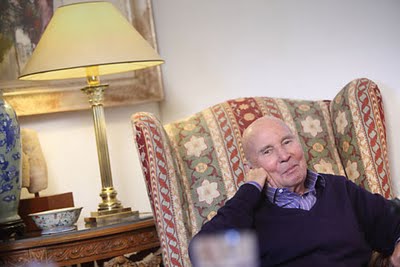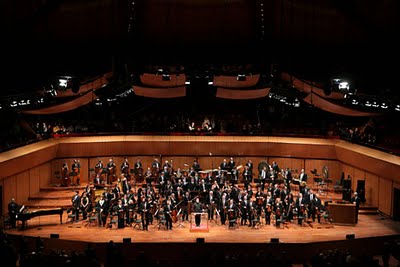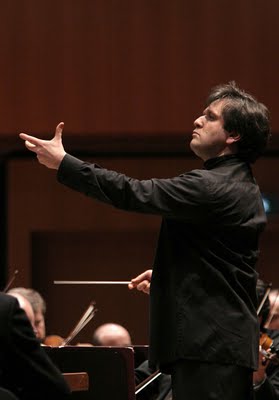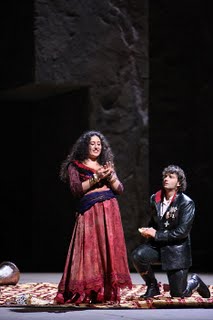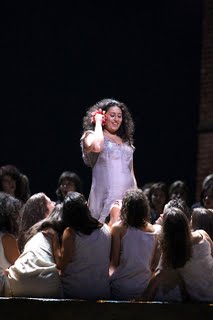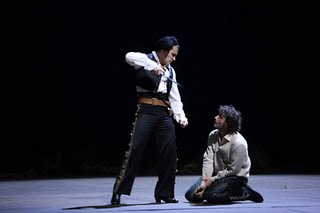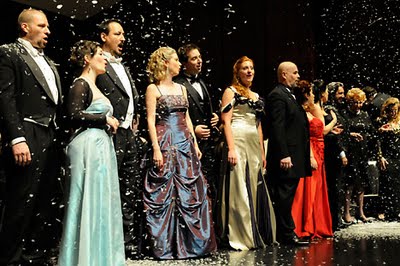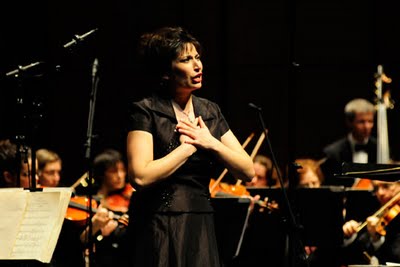Two Different Productions of Elektra Enthuse Italian Provincial Opera Houses
Generally, Strauss-Hofmannsthal’s “tragedy for music” Elektra is normally performed in comparatively small opera houses in Germany and in a few Central European countries. Most administrators and musical directors are scared by the thought of assembling a 115-piece orchestra, five Wagnerian singers, a large number of soloists in smaller roles and keeping the audience enthralled in their seats for nearly two hours of extreme tension and emotion.
Well, this season two different productions of Elektra can be seen in Italian Provincial theatres. They are quite successful and surprisingly attract also a new and younger audience, and they are likely to be revived next season.
Italy has many beautiful theatres, smaller than the main Opera Houses (at 500-900 seats) but very elegant and with a perfect acoustics. They are one of the outcomes of the complicated Italian historical development: until less than 150 years ago, the country was fragmented in a variety of small Kingdoms, Gran-Duchies, Counties and other small independent States; like in Germany, each was proud to have its own princely theatre. In addition, in the Italian unification movement and in the romanticism period, Italy opera had the function otherwise played by literature. On the top of the royal or princely theatres, a number of Opera Houses were built, and owned, by the palchettisti, the rich bourgeoisie that had individual boxes; comparatively small towns like Spoleto and Piacenza have two very separate theatres: one (generally smaller) for the aristocrats and other (somewhat larger) for the bourgeoisie. Many of these theatres are labeled, in the legislation, teatri di tradizione; they receive only limited financing by the central Government – most of the funds are channeled to the 13 national fondazioni liriche in major towns – and are supported by local authorities and private sponsors. Co-productions are necessarily quite frequent.
Of the two Elektras, one is a co-production of the theatres of Bolzano, Ferrara, Modena and Piacenza but Reggio Emilia and Ravenna may join in. The other is a production of Catania’s Massimo Bellini – the Italian theatre known for the best acoustics in Europe – but there are rumors that it may travel in Sicily and elsewhere in Italy next season. From these productions there are lessons to be drawn also for smaller Houses in North America – those that normally shy away from Elektra.
From the musical standpoint both productions are presented unabridged – a real rarity. In 1909, at its première in Dresden, a few verses of the text (and the relevant music) were cut because their explicit sexual references were considered unbecoming. Indeed as late as 1968, in the Golden Encyclopedia of Music, Normal Lloyd calls even the 'abridged' text “too lurid.” Although the sense of what is or is not prude has changed over the decades, it was only two years ago in a small Austrian festival that Elektra was performed unabridged for the first time. Although the unabridged is far from lurid, its sexually explicit text is essential to fully understand the Freudian overtones of the tragedy and the dazzling excitement of musical forces that goes beyond Wagnerian lines.
Situating an orchestra much larger than the theatre’s pit was solved in imaginative manner in both cases. In the Bolzano-Ferrara-Modena-
In the Catania production, under the baton of Will Humburg, the orchestra is also on the stage (the “Massimo Bellini” regular orchestra is strengthened by musicians on contract for this very opera in order to reach 114), but it is also in some of the boxes. The action is in the front stage, the orchestra pit and other boxes. In both productions, the audience has the feeling of being part of the plot.
Maestros Kuhn and Humburg have different temperaments – the former more passionate and the latter, tragically dryer. The cast of both productions is mostly German and young. Interestingly, in the Bolzano-Ferrara-Modena-
The Playbill
Elektra in Bolzano, Ferrara Modena, Piacenza
Elektra Anna Katharina Behnke, Elena Popovskaya
Klytamnestra Mihaela Binder Ungureanu, Anna Maria Chiuri
Chrysothemis Maida Hundeling, Michela Sburlati
Aegisth Richard Decker
Orest Thomas Gazheli, Wieland Satter
Der Pfleger des Orest, L`aio di Oreste Igor Bakan
Die Vertaute Elisa Maffi
Die Schlepptragerin L`ancella dello strascico Charlotte Soumiere
Ein Junger Diener Un giovane servo Arnold Bezuyen
Ein Alter Diener Vito Maria Brunetti
Die Auseherin La sorvegliante Martina Bortolotti
Magden: Jolena Bodrazic, Monika Wackerle , Anita Ahsef, Jae Hee Kim, Lara Martins
GUSTAV KHUN Conductor
Stage direction Manfred Schweigkofler
Costumes Hans-Martin Scholder
Sets Michele Olcese
Lighting Andrej Hajdinjak
Chorus Master Corrado Casati
Orchestra Haydn of Bolzano and Trento
Orchestra of Emilia Romagna
ELEKTRA in Catania
Conductor WILL HUMBURG Stage Direction GABRIELE RECH
Sets and lighting Giuseppe Di Iorio
Costumes Sandra Meurer
Chorus Master Tiziana Carlini
KLYTÄEMNESTRA Gabriele Schnaut, Renèe Morloc
ELEKTRA Janice Baird, Jayne Casselman
CHRYSOTHEMIS Elena Nebera, Elizabeth Hagedorn
AEGISTH Roman Sadnik
OREST Stefan Adam
DER PFLEGER DES OREST Salvo Todaro
DIE VERTRAUTE Graziella Alessi
EIN JUNGER DIENER Mariano Brischetto
EIN ALTER DIENER Giuseppe Esposito
DIE SCHLEPPTRAGERIN Francesca Aparo
DIE AUFSEHERIN Piera Bivona
I MAGD Marlene Lichtenberg
II MAGD Monica Minarelli
III MAGD Antonella Fioretti
IV MAGD Vitalija Blinstrubyte
V MAGD Manuela Cucuccio
ORCHESTRA, CHORUS AND TECHNICAL STAFF OF THE TEATRO MASSIMO BELLINI
